Alpha Industries is synonymous with garments trusted by soldiers, sailors and aviators to protect them from the most dire conditions across land, sea and air. This is what has always attracted El Solitario and its founders to the Alpha brand. Aligning El Solitario’s disruptive ethos with Alpha’s iconic military functionality was to bring something unique and full of purpose in today’s ubiquitous streetwear scene.
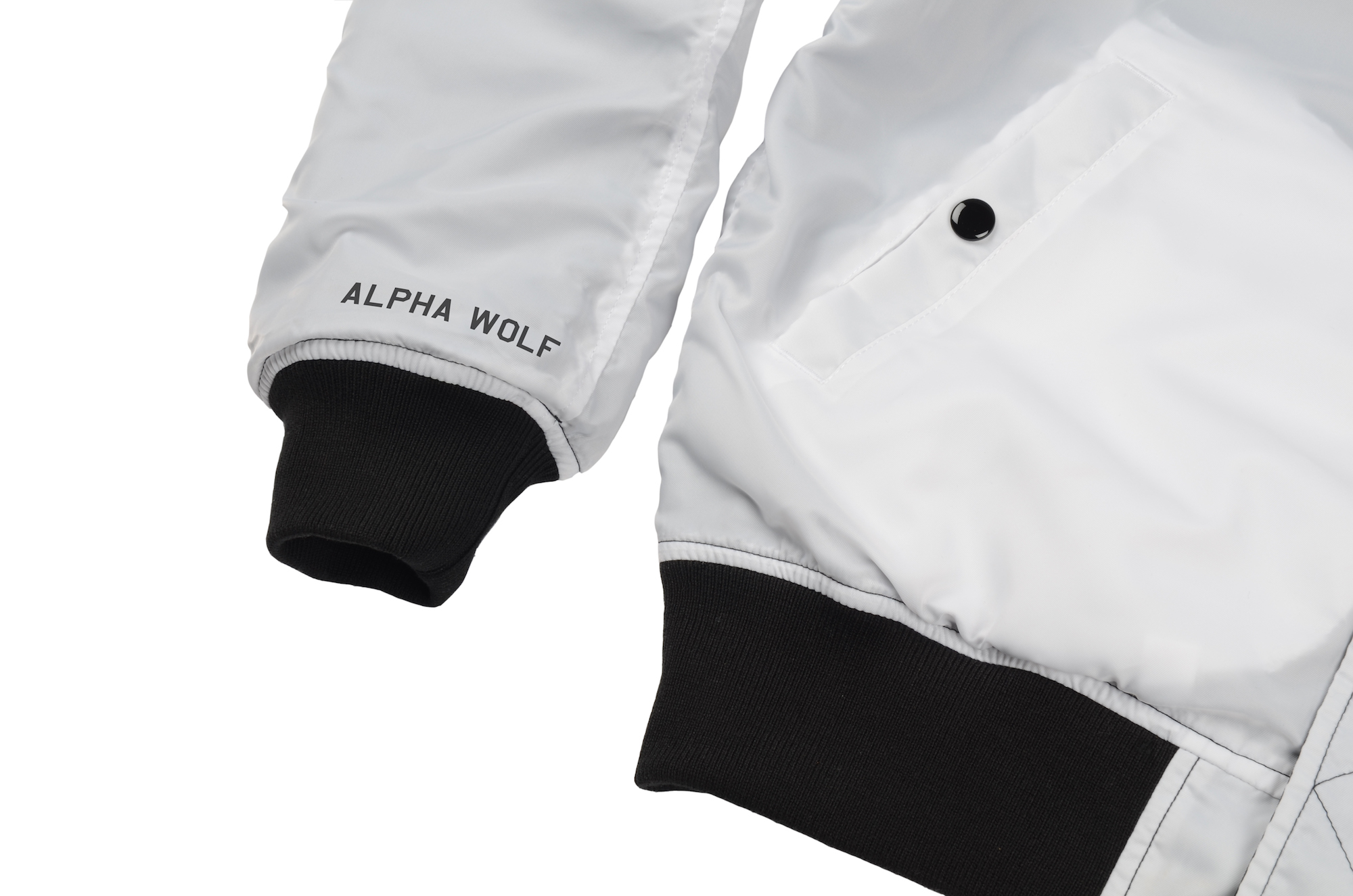
The bomber jacket is one of the most popular outerwear styles of current day, and probably the most famous piece of military clothing to find crossover success as a piece of civilian wear. The jacket possesses a rich history which can be traced from its military origins through various subcultures including the punk and skinhead movements, gay communities in the 1980s, and more recently the high fashion set. As wide-ranging as its appeal has been, the iconic jacket has always managed to strike a chord among emerging youth movements, which explains its current status as a well-known and much-loved streetwear staple. Bomber jackets are not part of a trend; they are a bonafide timeless wardrobe essential, and are built to last despite having a fairly conservative price tag when it comes to outerwear. Here we take a closer look at the history of the jacket you’ll be wearing for the foreseeable future.
The best staple pieces seem to be ones that grew out of functional necessity, and the bomber jacket is no exception. In the days of propeller aircraft, airmen wore leather jackets including the A-2, which is an important ancestor of the modern flight jacket. The fleece lining meant that the jackets were warm, and from a fashion perspective these jackets were tasteful even by today’s standards, with elasticated sleeves and waist, a high wraparound collar, and front pockets. However, the invention of the jet aircraft meant that planes could fly at much higher altitudes and in turn, in much colder temperatures than before. When leather jackets such as the A-2 would get wet from rain or perspiration, the water would freeze at higher altitudes making the jackets hard, cold and extremely uncomfortable. Also, the new jet aircraft boasted a more streamlined design meaning less space in the cockpit. A slim, lightweight and yet warm jacket was needed as an answer to the evolved jet technology, and it came in the form of the B-15, often considered the godfather of the modern bomber. These had fur collars and were made of cotton: although nylon had been discovered prior to World War II, items like parachutes took precedence over flight clothing when it came to allocating nylon supplies during the war. After 1945, nylon became the material of choice for bomber jackets because of its ease of care, water resistance and resistance to mildew, insects and perspiration.

In 1949 the B-15 was upgraded to become the MA-1, which has since become the most iconic and the most replicated version. The design of the jacket was again a reaction to the technological advancements of the aircraft themselves, and the needs of the pilots: cockpits had better insulation so the fur collar was no longer needed; instead it was replaced with a knitted, elastic collar that allowed for more room for parachute harnesses. It was at this stage that the familiar orange lining was added so that in the event of a plane crash, the pilot could turn it inside out to aid rescue visibility. It was also around this time that the jacket started to be produced in colors other than the Air Force’s standard issue midnight blue. Throughout the Korean and Vietnam Wars, the jackets were produced in the now ubiquitous sage green color to more closely mirror the ground vegetation and to help provide additional camouflage in the instance of a crash or emergency landing in hostile areas.

The jacket was originally developed by Dobbs Industries strictly for the U.S. Air Force and Navy fighter pilots. It wasn’t until the late 1950s that the jackets first appeared in Europe, probably through government surplus stores and some black market or secondhand sales. A crucial event in the bomber jacket’s history happened in 1963 when an offshoot of Dobbs eventually became Alpha Industries, and they received a military contract to produce the jackets. It was then that more of the jackets were shipped to Europe and Australia as Alpha began to export them to both European Air Forces and commercial customers. Coincidentally, it was around the same time that a number of important subcultural movements started popping up all around the globe that would take the jacket and make it an integral part of their uniforms for the next few decades.
In the late 1960s, the original British skinheads were among the first to adopt the jacket as a sartorial expression of the changing social conditions of the time. A split had developed amongst the “mods” in London: the more affluent mods could afford such luxuries as fashionable clothes, scooters and other accessories (including the trendy amphetamines) that exemplified the culture; the “hard mods” of the working class lived in the same poor neighborhoods as immigrants, exposing them to facets of black culture and most notably music, including soul, ska, reggae and the like. These lower-class individuals were also more likely to work in factories or blue-collar settings, meaning that they couldn’t have long hair and favored workwear including jeans, work boots and military-inspired clothing including, you guessed it, the bomber jacket. The jacket itself may have been a direct rejection of the more bourgeois Harrington jacket that was a favor of the mods. This mod offshoot of non-racist reggae fans began referring to themselves as “skinheads”; it wasn’t until the late 1970s and the commercialization of punk that the skinheads moved further away from their multicultural origins and became involved with far-right and racist politics they are now synonymous with.
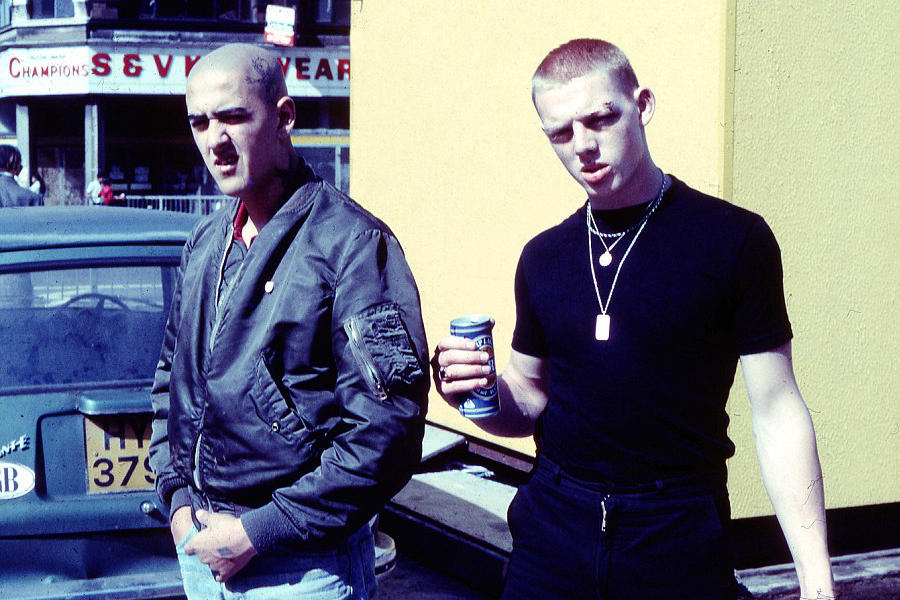
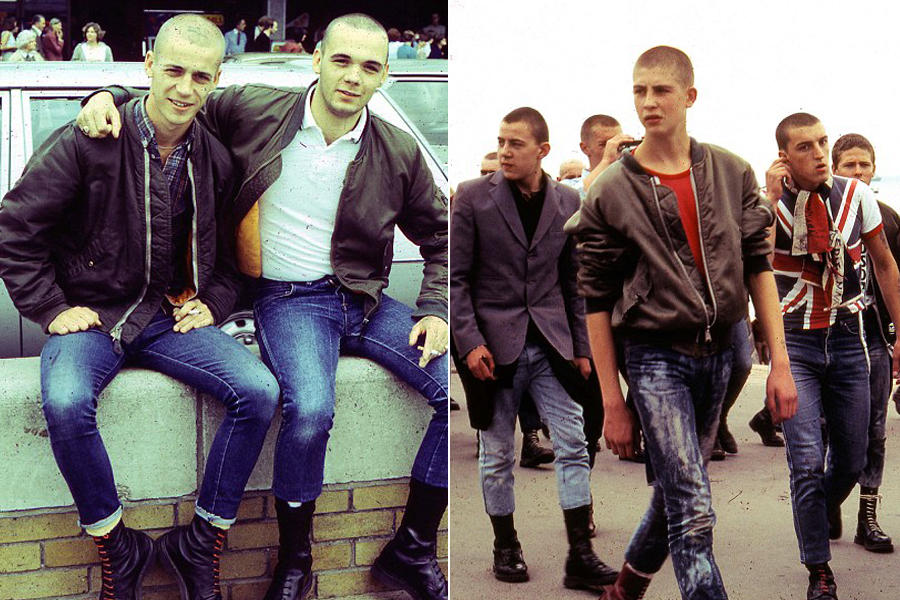
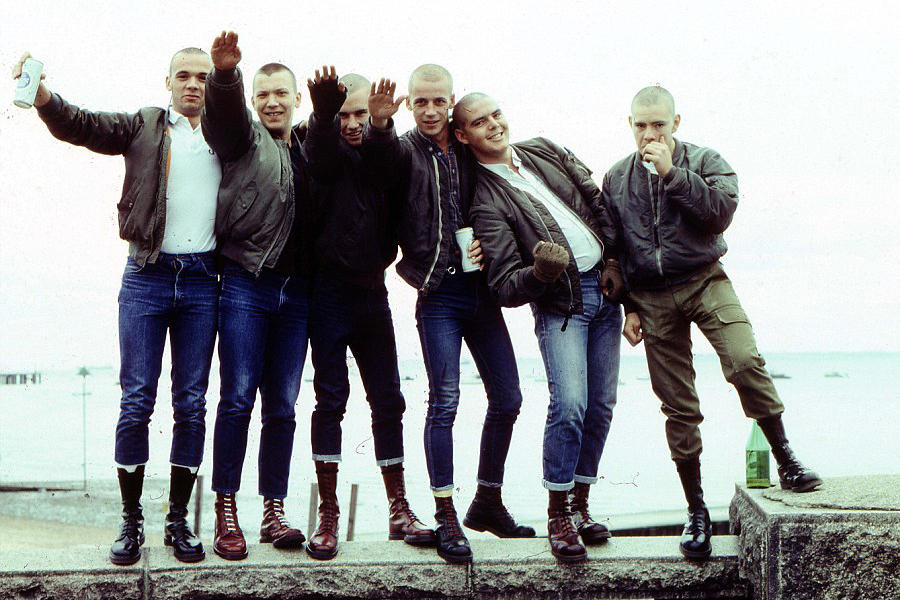
It might seem somewhat ironic that the gay community in London was one of the first to re-assimilate the skinhead uniform, but it actually makes perfect sense given the resilience of LGBTQ communities and their propensity throughout history to reappropriate that which has aimed to oppress them, most notably labels and derogatory slang but also fashion and more abstract ideals like hypermasculinity: gays dressing in the skinhead uniform was the ultimate subversion of the skinhead values and mentality. On the other side of the pond, it was a time period when gays were openly excluded from military service, an oppression which was again flipped on its head by the New York City ballroom community, who often included a “Military Realness” category in their competitions. The hypermasculine look was fetishized, and jeans, Doc Marten boots, cropped hair and MA-1’s were now a common uniform in the global gay community as well.
Throughout the remainder of the 20th century, the bomber jacket sustained a level of popularity, riding the wave of subcultural explosions such as the grunge and alternative waves of the 1990s. Youth wore plaid shirts, stonewashed denim and Doc Martens, and vintage shopping or “thrifting” began to take off. The high fashion set also began to take a serious interest in military wear, and Raf Simons—who himself had a military family history being the son of an army night watchman—was one of the earliest designers to present a full collection of military-inspired clothing with his iconic Fall/Winter 2001 collection, entitled “Riot, Riot, Riot.” At the same time streetwear was going through an immense period of growth and evolution during the 2000s, growing from its skate and surf origins and gaining widespread appeal among young people of all social and economic status. Alpha Industries began a series of successful collaborations with a plethora of street labels including big players such as BAPE, New Era and Stussy, as well as more niche imprints such as Japanese cult brands uniform experiment and mastermind JAPAN.
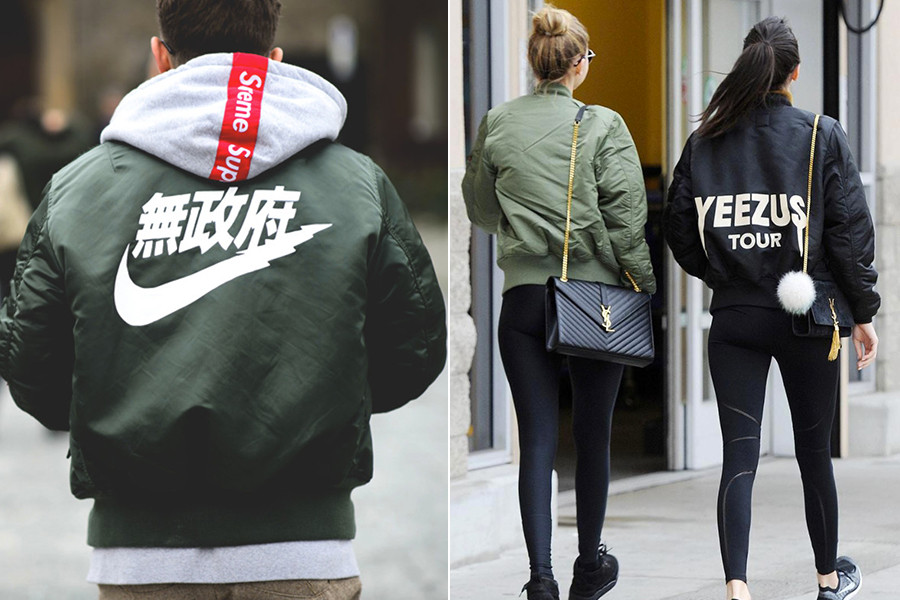
Taking a look at the Bomber Jacket rich history there’s no denying that this piece has managed to not only stand the test of time, but resonate with a wide range of people over the last seven decades, regardless of their social or economic status. It’s the perfect example of how practicality, functionality and effortlessness will never go out of style and this why at El Solitario we are so proud to have our own original version of it!

Black outside and solid white inside. El Solitario Alpha Wolf lets you choose between the secretive power of black and the pure calmness of white, both sides with slash pockets. The color black relates to the hidden. The secretive and the unknown, as as a result it creates an air of mystery. Gives protection from external emotional stress. What black covers, white uncovers. White reflects amplifying everything on it’s way.
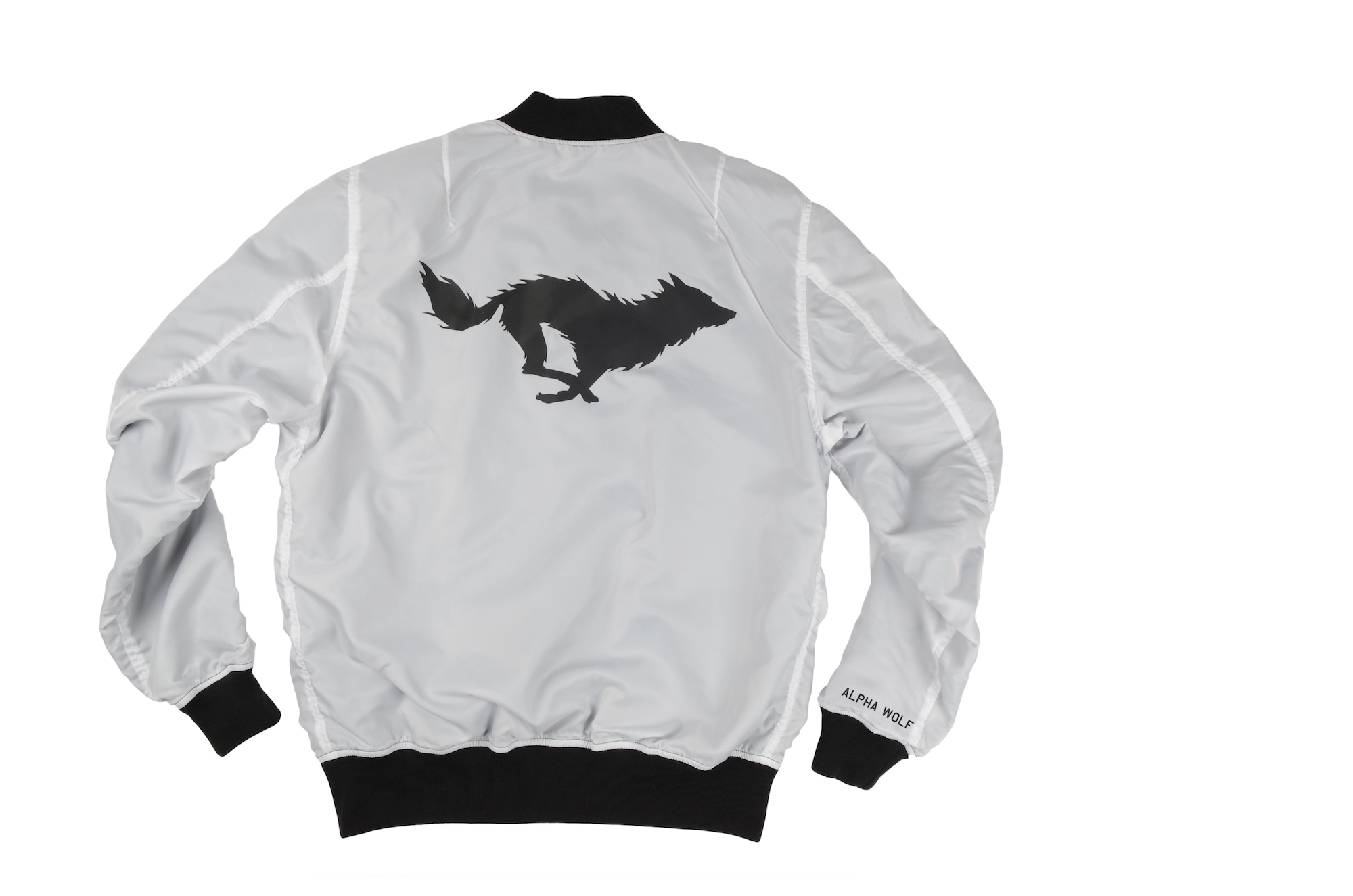

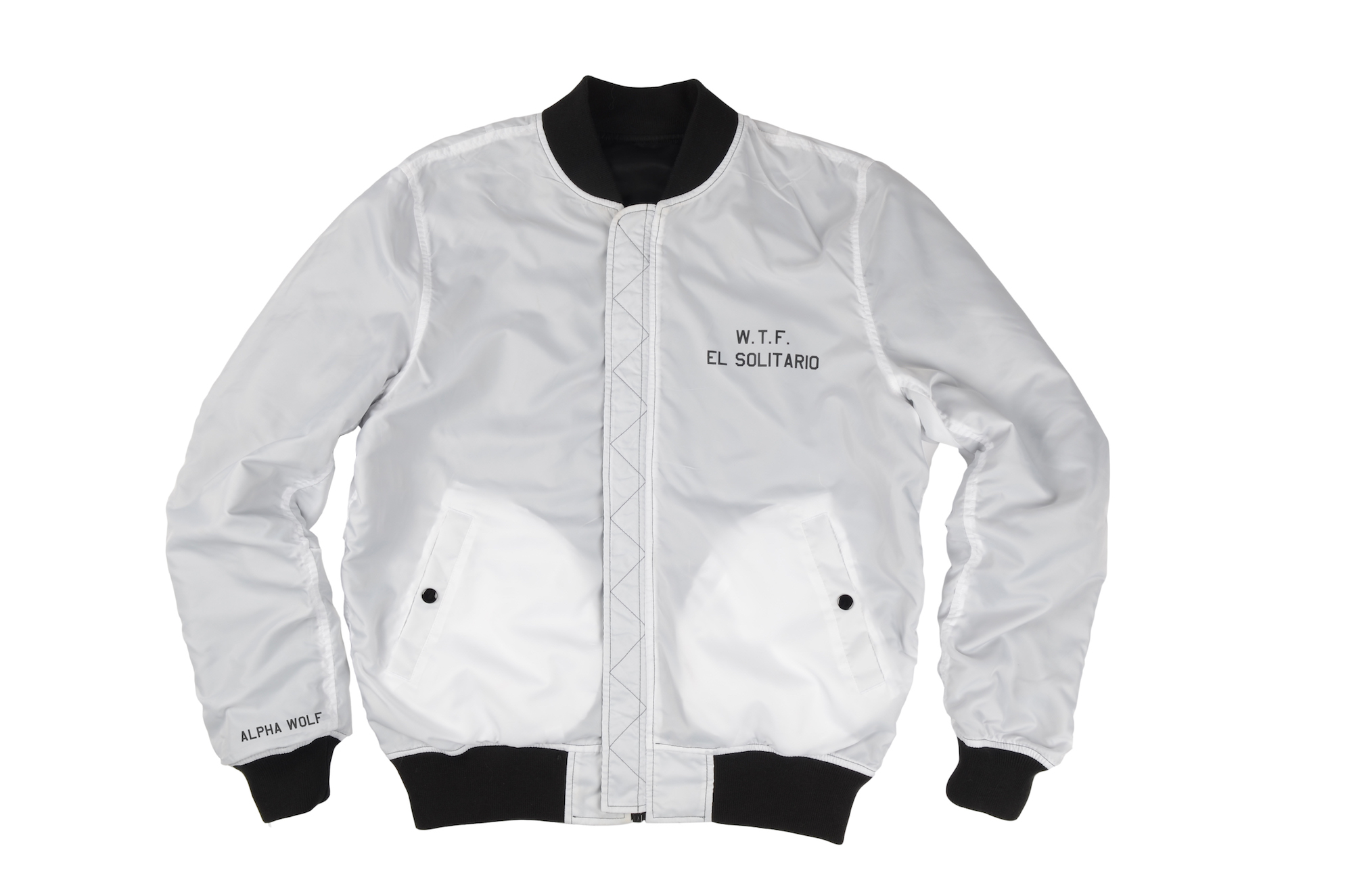
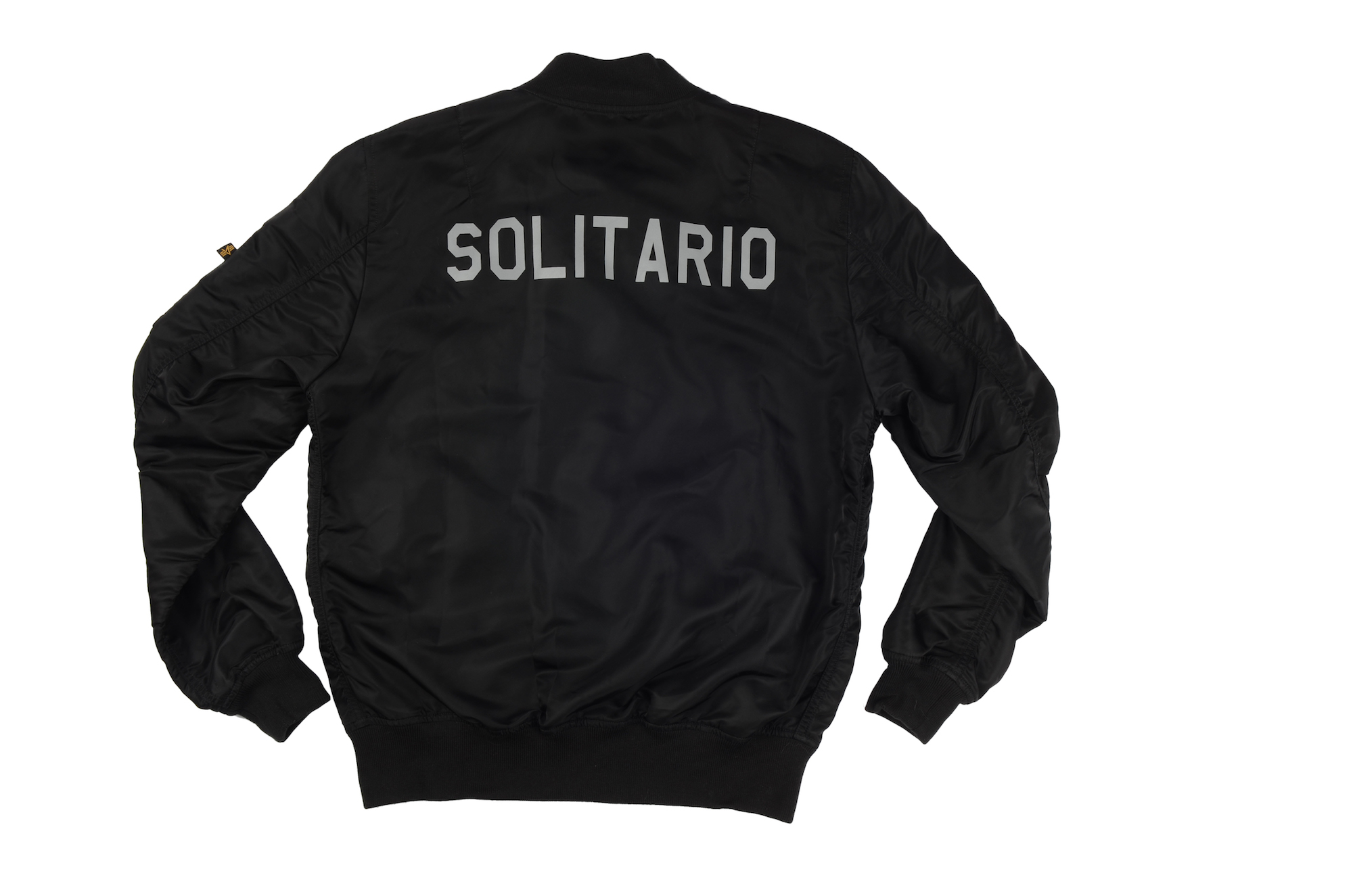
One Response
I said it before and I’ll say it again .. with variation of course ( that ‘ jazz ‘ thing ya knows )
Atsa one sharp looking jacket ! 😎